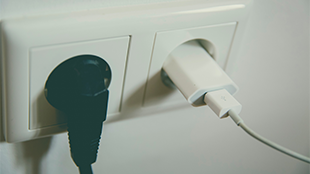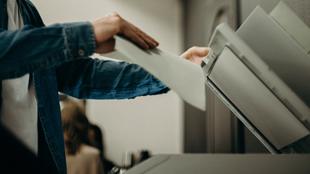
Trying to reduce unnecessary costs can be very difficult, especially in the smooth-running of a busy school.
There are many ways to reduce day-to-day costs. Below are a few key areas we've found when working with schools which may help to review cost savings and unneccessary expenditure.
Electricity
- At the end of the day switch off devices that are not in use (computer desktops, laptops, screens, projectors, ActivePanel screens and more). This simple procedure does add up to savings. When devices are not being used in lessons turn off projectors and screens.

- Leave computers and laptops on as these can take little longer to start when turned back on - it is a compromise. If you have Impero, this can be used to schedule PCs to turn on and off when required. The same effect can be achieved using a Wake-On-Lan program. Please ask your ICT Engineer for details.
- Sounds obvious, but remember to turn off lights. Again, a simple procedure but contributes to reducing costs. Use as much natural light as possible. This again is a simple thing to do but how often are lights left on when sunlight is streaming through the windows. Use blinds and curtains when needed to darken a room to watch big screens and once finished ensure you open the curtains again. This does lead to the question of the suitable fitting of blinds and curtains that are easy to use - a beneficial long term investment.
- The long-term cost of projectors and interactive white boards (IWBs) can be very high due to their power usage and the cost of replacement parts. Something to consider. Please ask your ICT Engineer for energy saving alternatives, such as flat panel interactive screens to replace energy hungry IWBs and projectors.
- Ensure light fittings use low energy bulbs and filaments. When these are on, they are using less electricity than conventional bulbs and strip lighting.
- During the holidays consider turning all electrically devices and items off when possible. Even a week can deliver a cost saving.
- Automatic shutdown of devices - automatic switches on timers or power management software could be used schedule devices to be turned off at a specific time.
- Modern equipment is not only quicker but also more energy efficient. When replacing dated devices you are also investing in better energy use, such as old, dated VDUs with flat LED screen and all-in-one units over multiple pieces of hardware.
- Electrical consumption can also be reduced by closing off rooms and the areas of a building when not in use. Re-arrange rooms so that groups can be used together in one zone and not scattered around a building requiring everywhere to be heated and powered.
- Review staff areas where kitchen appliances are fitted, such as cookers or microwave ovens. These could also be turned off when not in use - standby usage does add up!
Heating
- If a room is too hot the first thought can be to open a window. Before doing this perhaps turn down the heating thermostat if it is available in the room.
- Are digital thermostats available to control or monitor temperature? Is the school's main boiler truly optimised or could it be programmed to only come on at specific times, especially in winter months?

Water
Water usage can be easily overlooked and worth a regular review:
- Any leaking or dripping taps? Repair as quickly as possible
- Are there any heating system leaks or draining issues? Remember that refilling takes time and resources so this needs keeping an eye on throughout the year

Printing
This is one area where alot can be done to reduce costs. And it can't be achieved unless everyone takes part! Some of the things to consider are as follows:
- Is the printer being considered or used economically?
- How much do toners and ink cost for the printer? Standard cartridges may cost less in terms of initial outlay but then high volume capacity cartridges can enable more prints to be done.
- Look at where and when high volume printed is needed, and who needs to undertake it.
- Could you print double-sided rather than individual pages? Here the saving is also with the amount of paper being used.

- Does everyone truly need to print in full colour ? Can black and white be enough, especially if being copied multiple times?
- Before printing as high quality, print in draft quality first. As well as reducing the use of toner it’s also quicker to print.
- Reduce the font size, this will reduce the total number of pages in the end being considered to print. Remember someone needs to be able to read this so not too small.
- Check on screen before printing, possibly use a digital copy over a physical paper copy. It will save weight as well.
- Control access to printer devices and restrict who may have access to print using larger office-based printers. Pre-load letter headed paper in certain trays. Use A3 printing for certain subjects or certain tasks.
- By restricting access, it is possible to see where printing is truly needed or not and by whom. Have users individually sign-in and have printouts linked back to them enable tracking. Who is truly printing out the most for use or wastage? Managed print service software offers this and more. Additionally, electronically charging for printing will make users think and check before committing to print. It can provide very useful data on the costs for printing on one device or collectively across several of them in a single office/building or site wide.
Contracts & Licensing
Check which contracts are in place and review whether they are actually needed. Sometimes licenses are purchased for educational software which becomes dated or replaced and the payment continues as a auto-renewal. Also check your service contracts. What support are you receiving and are you paying for services that are no longer required?
Advice - how can SBS help?
I hope you have found this information useful. If you require any help or support, please contact SBS and we will be happy to help on 0345 222 1551 • Option 1 or email ICTservicedesk@schoolbusinessservices.co.uk
Get sector Insights delivered straight to your inbox.
Subscribe to to the SBS Blog and never miss an update.

(1)(2)(1)(1)(1).jpg)